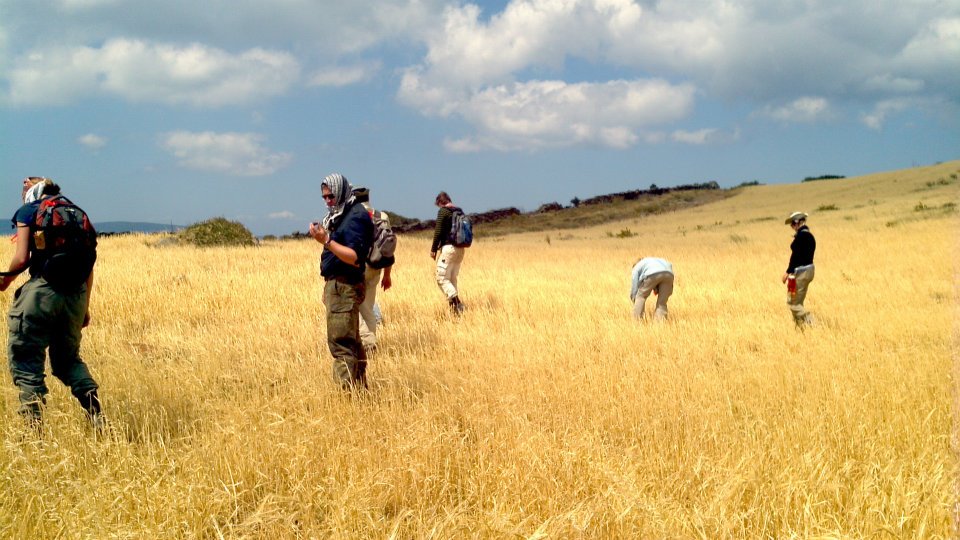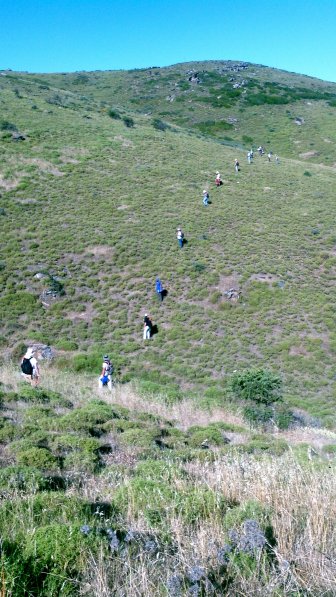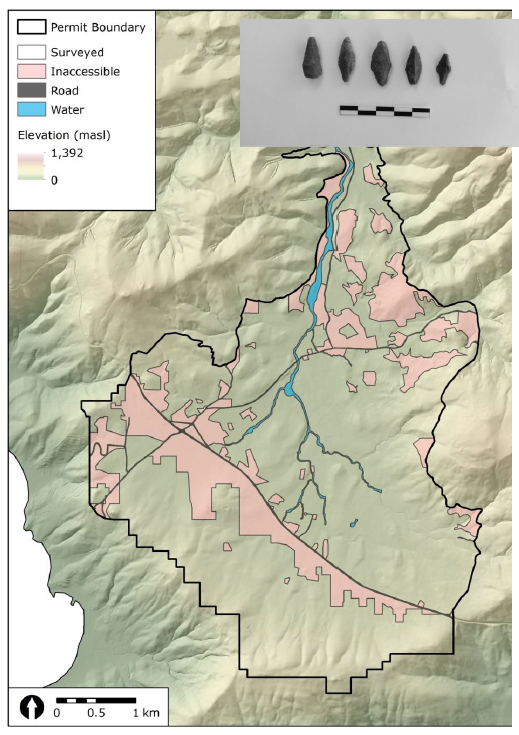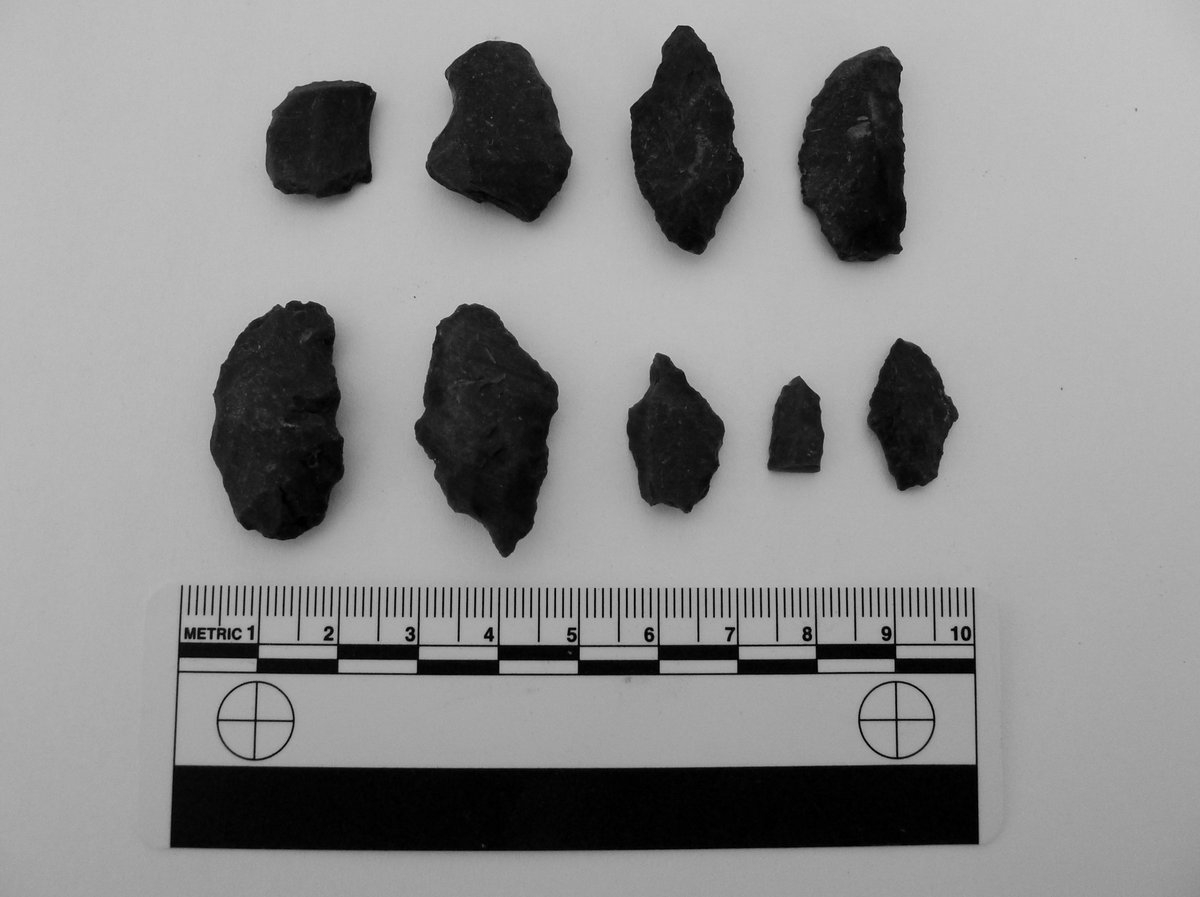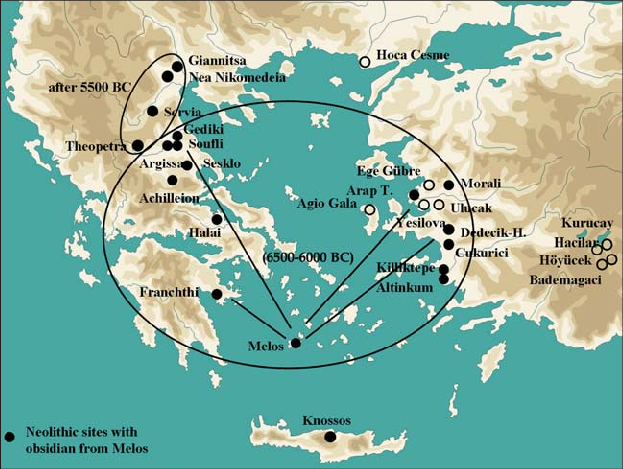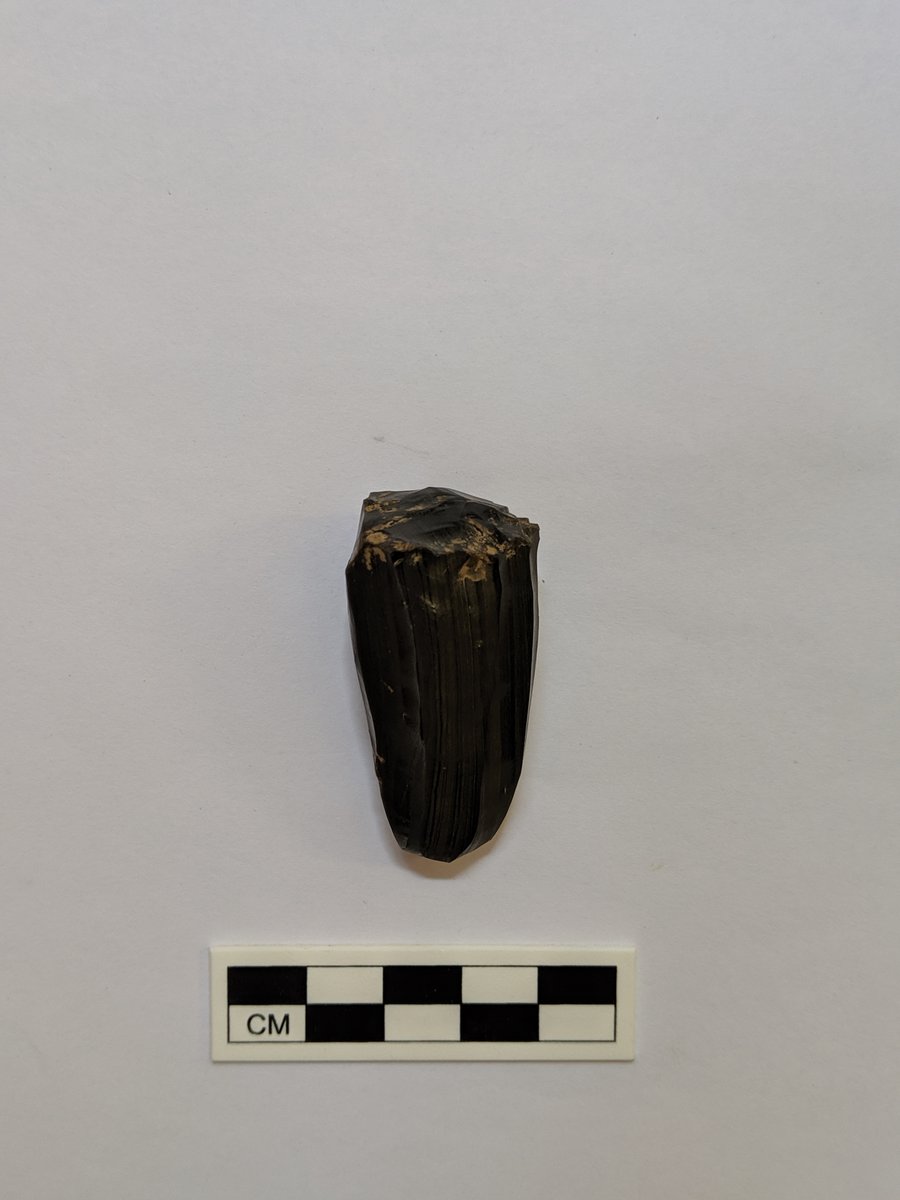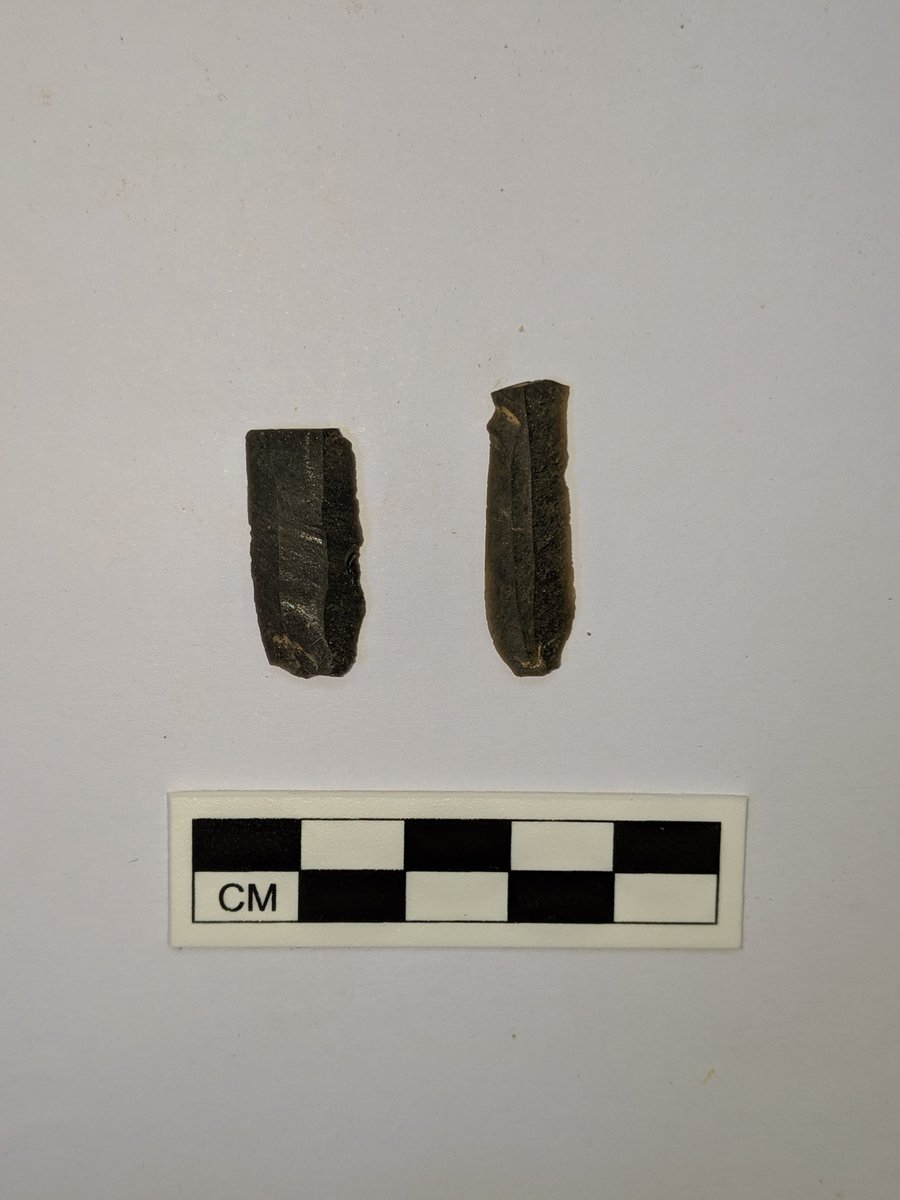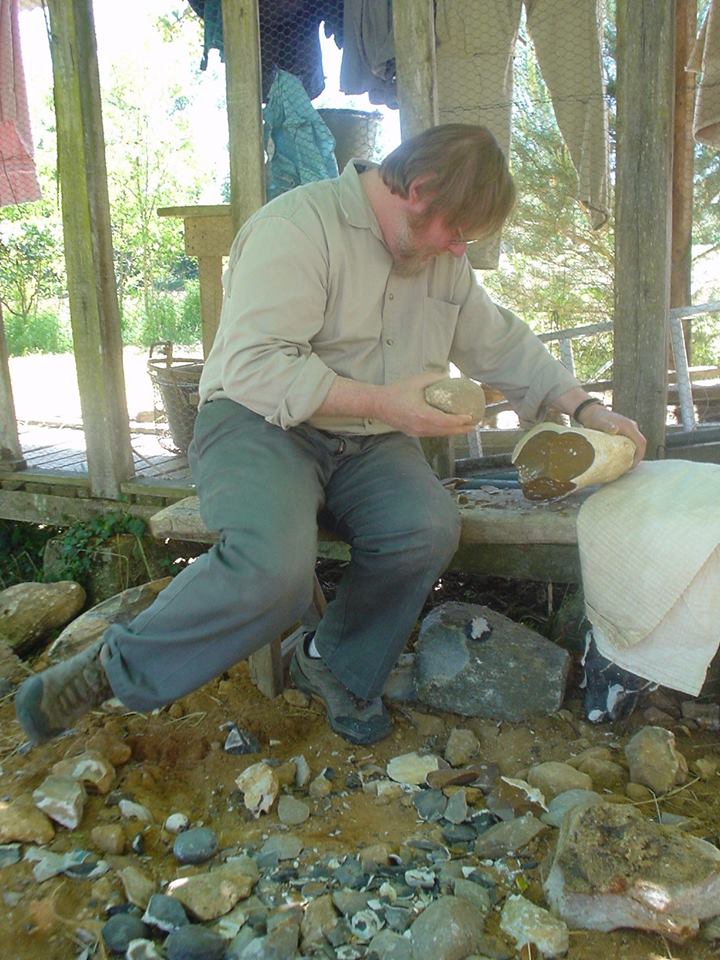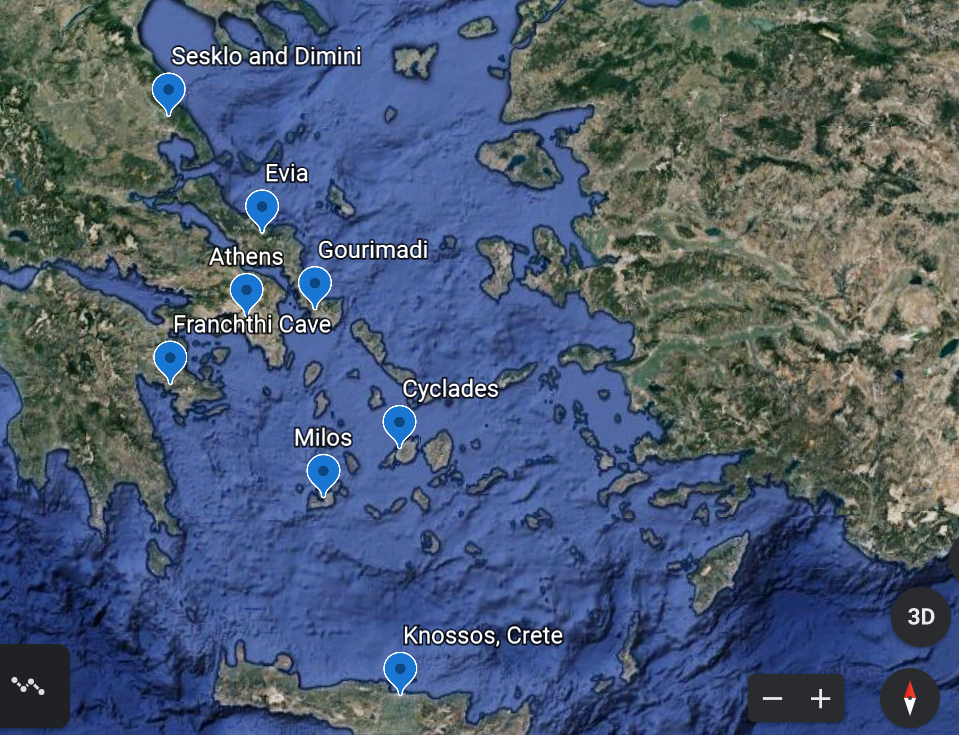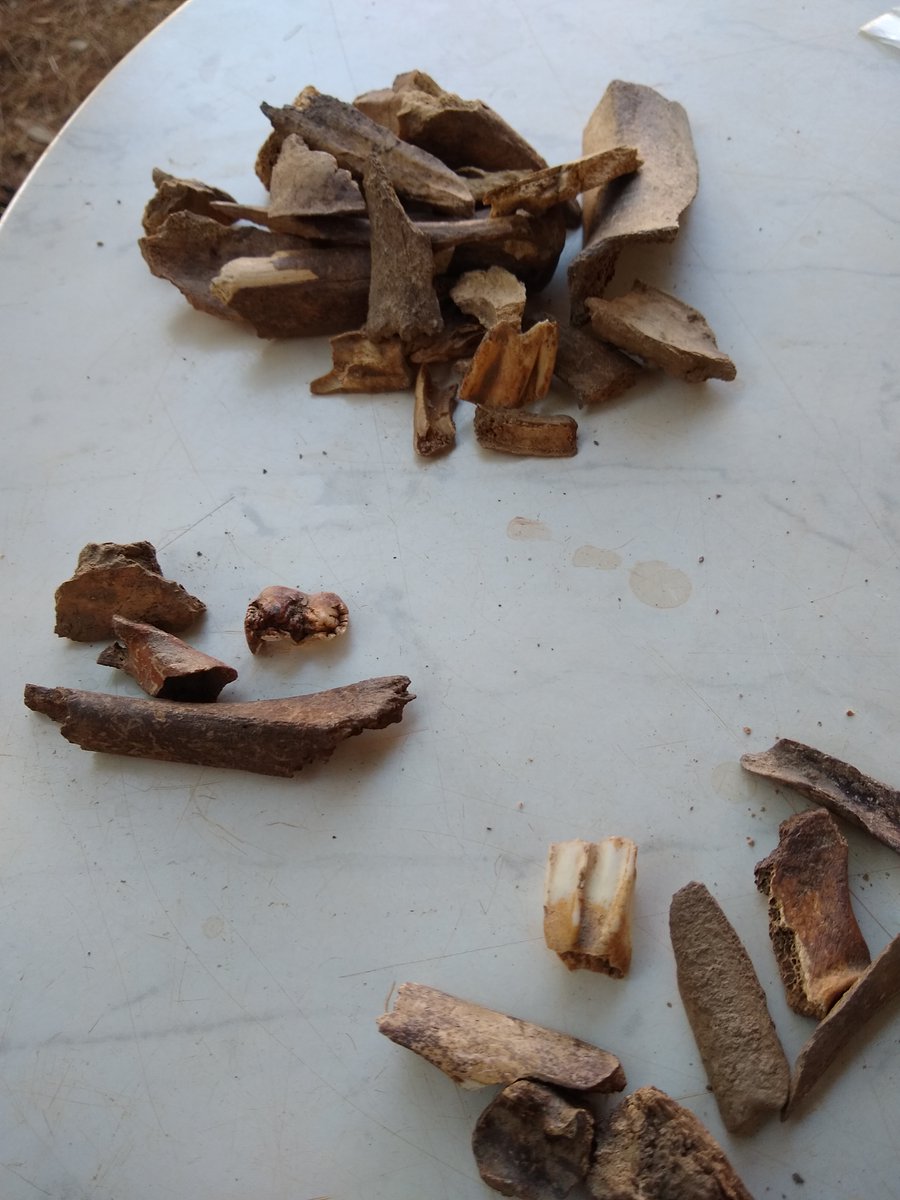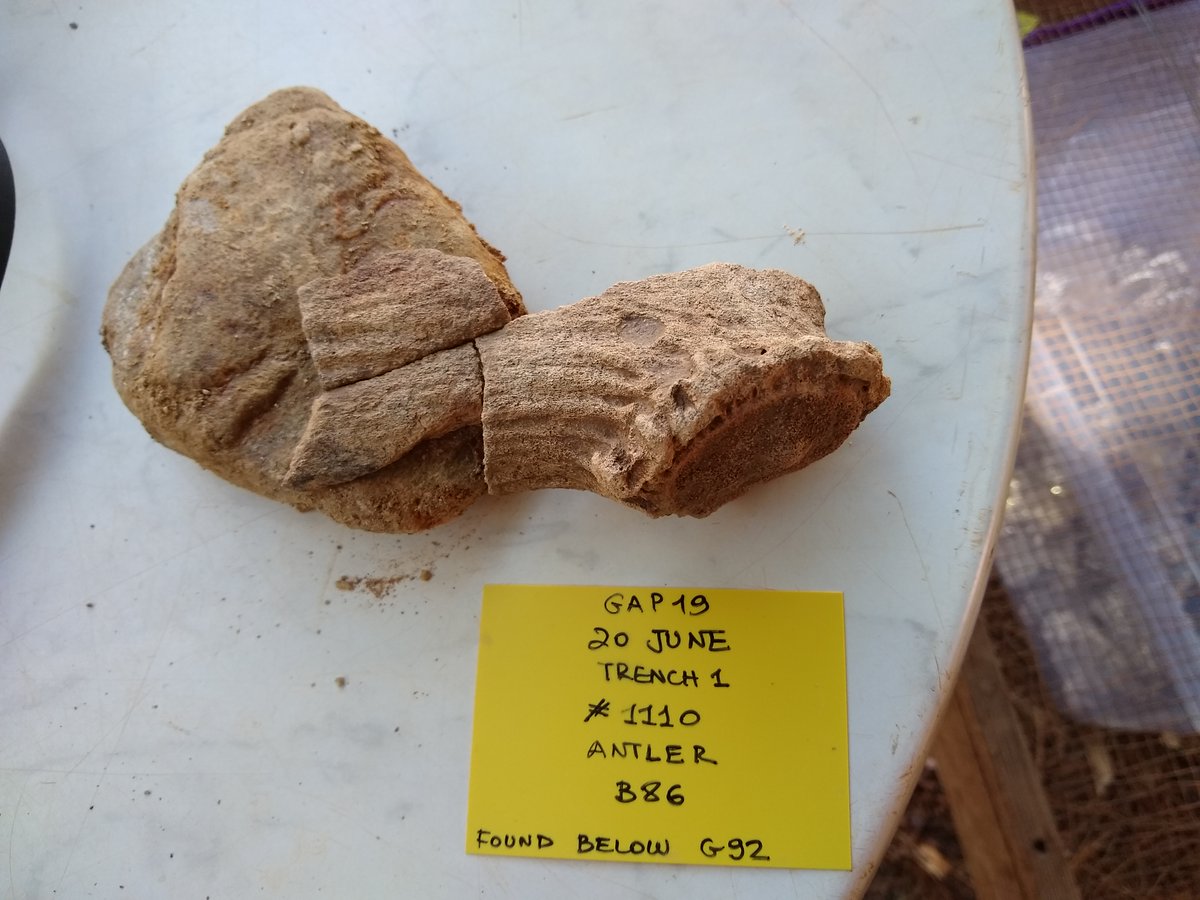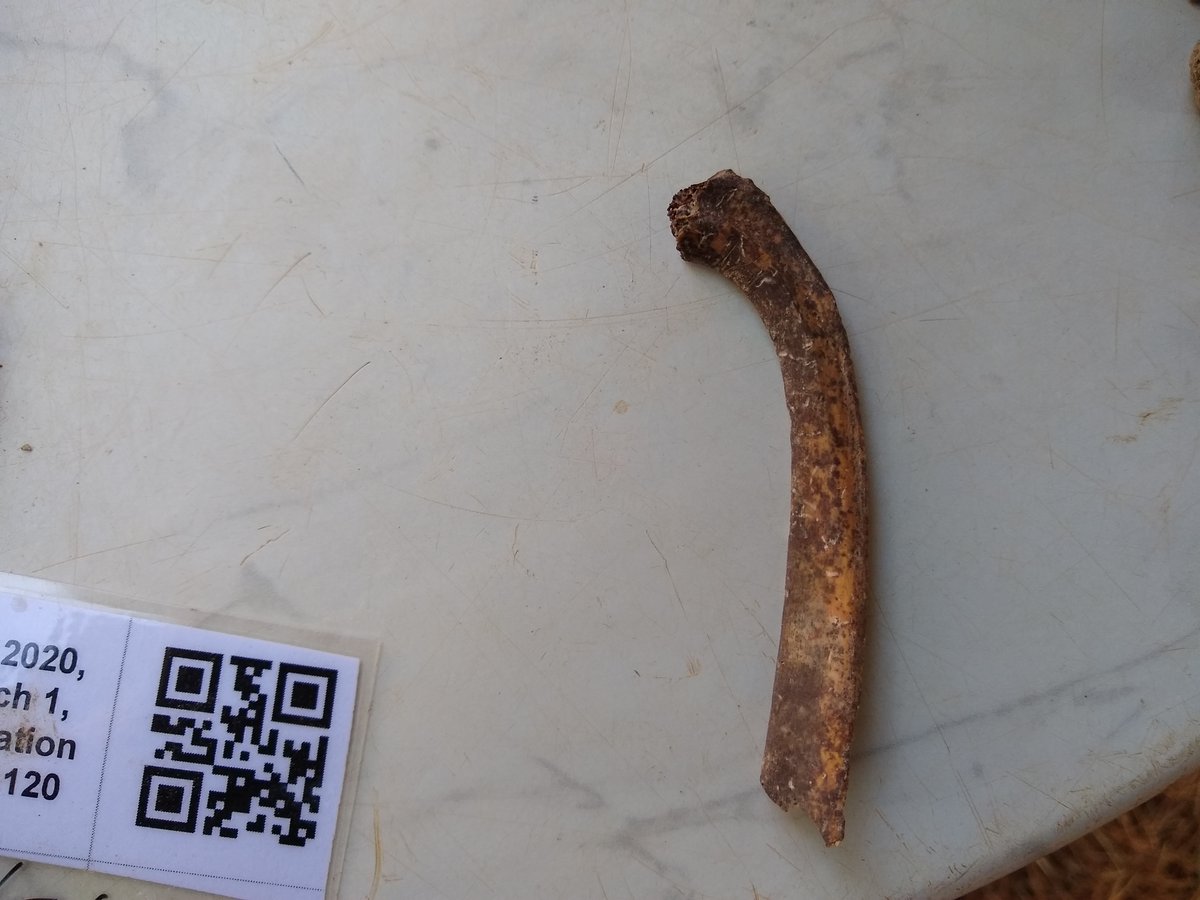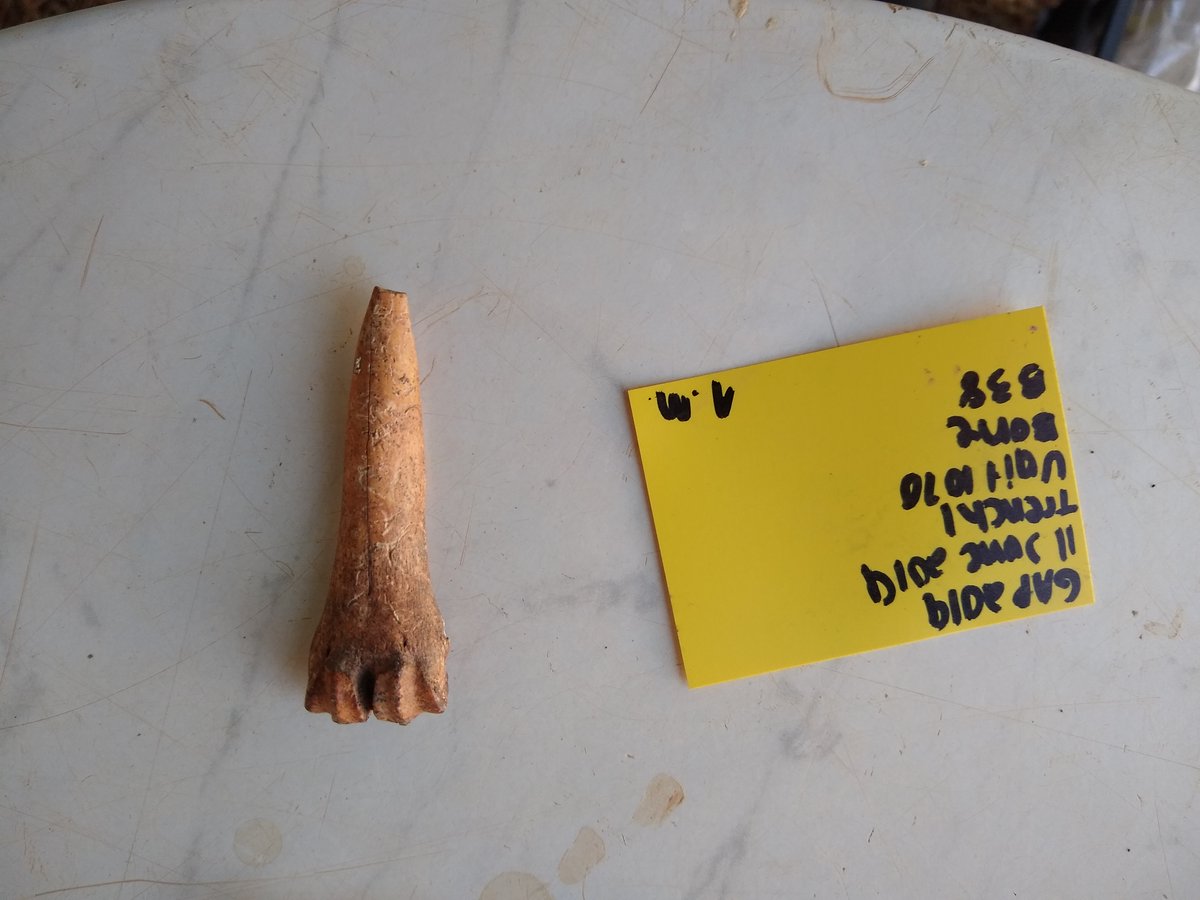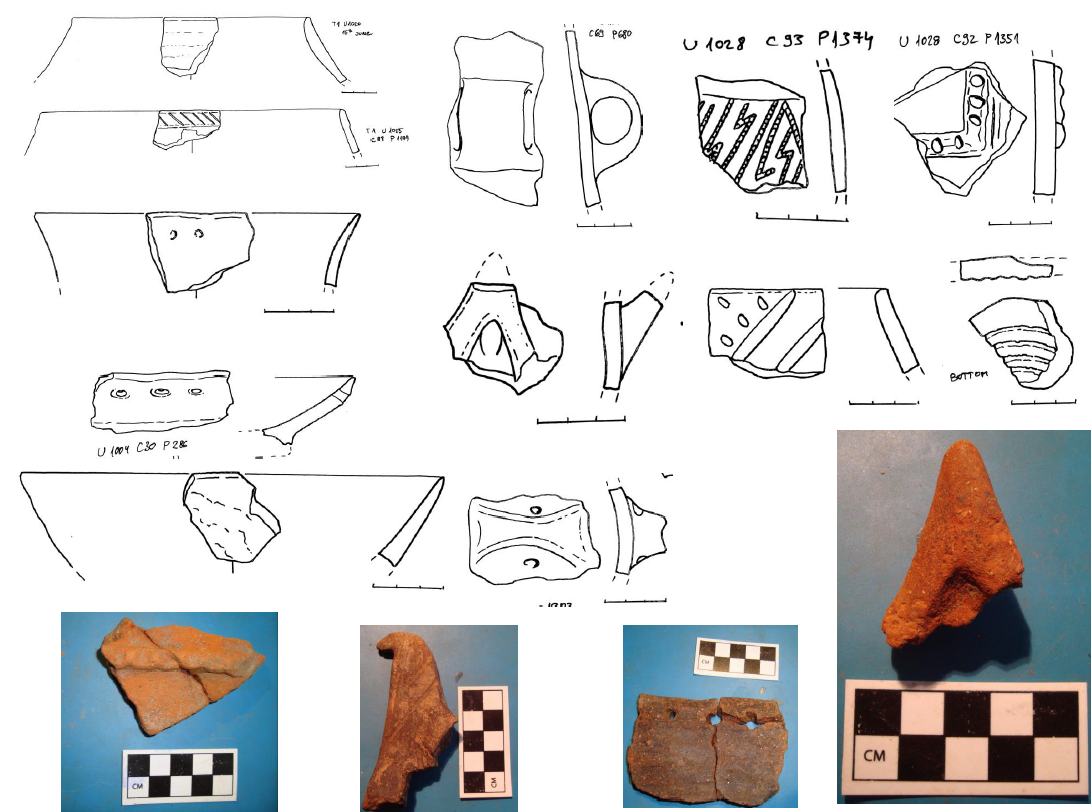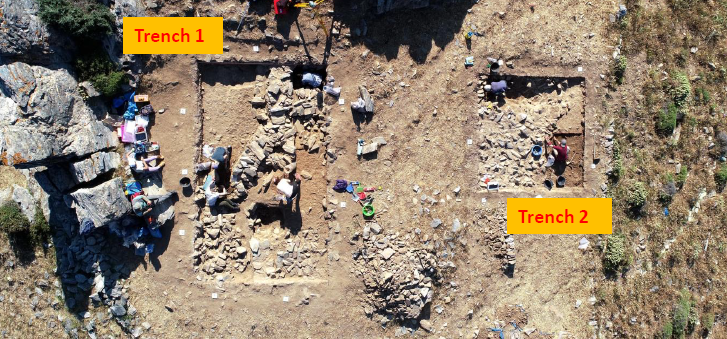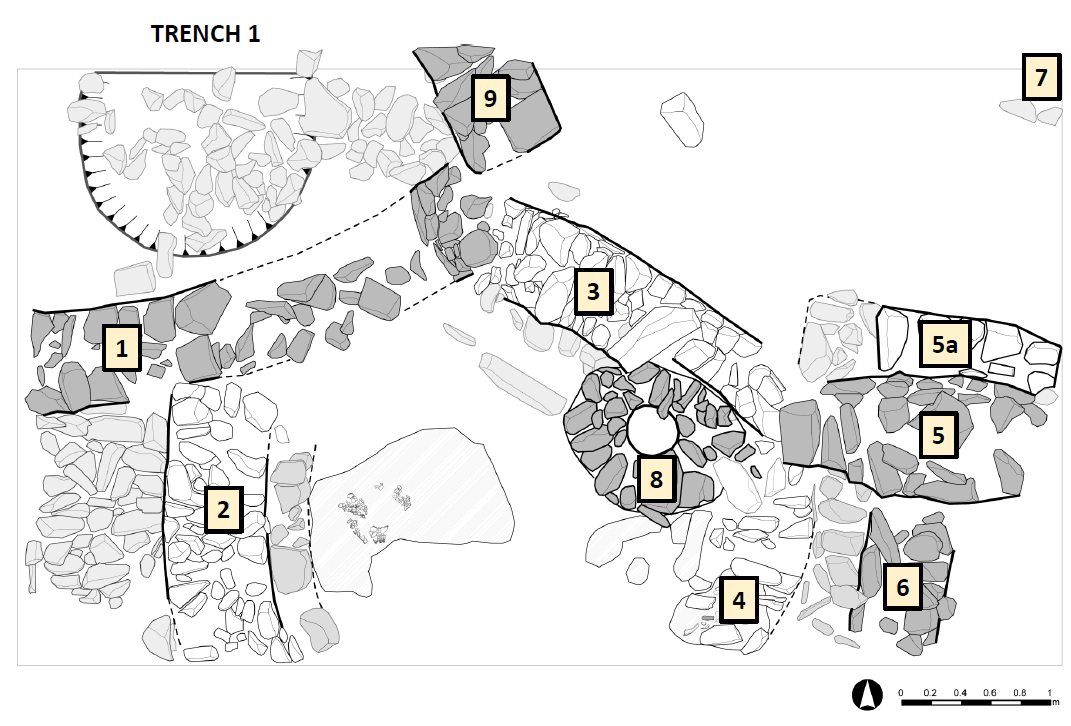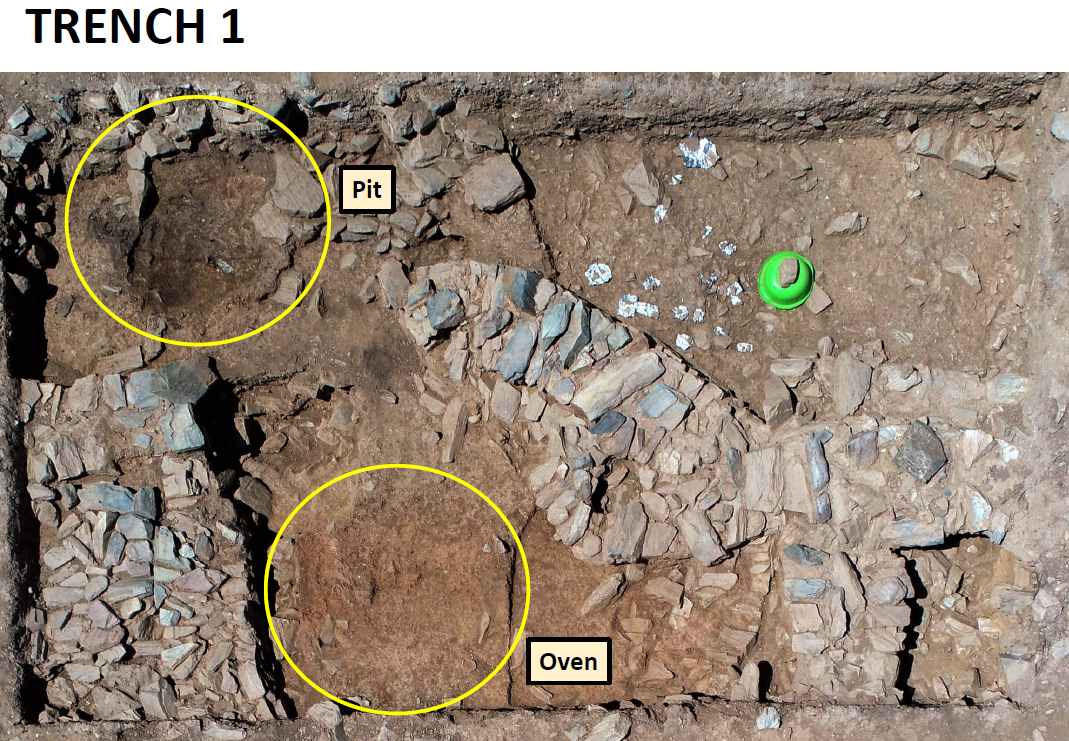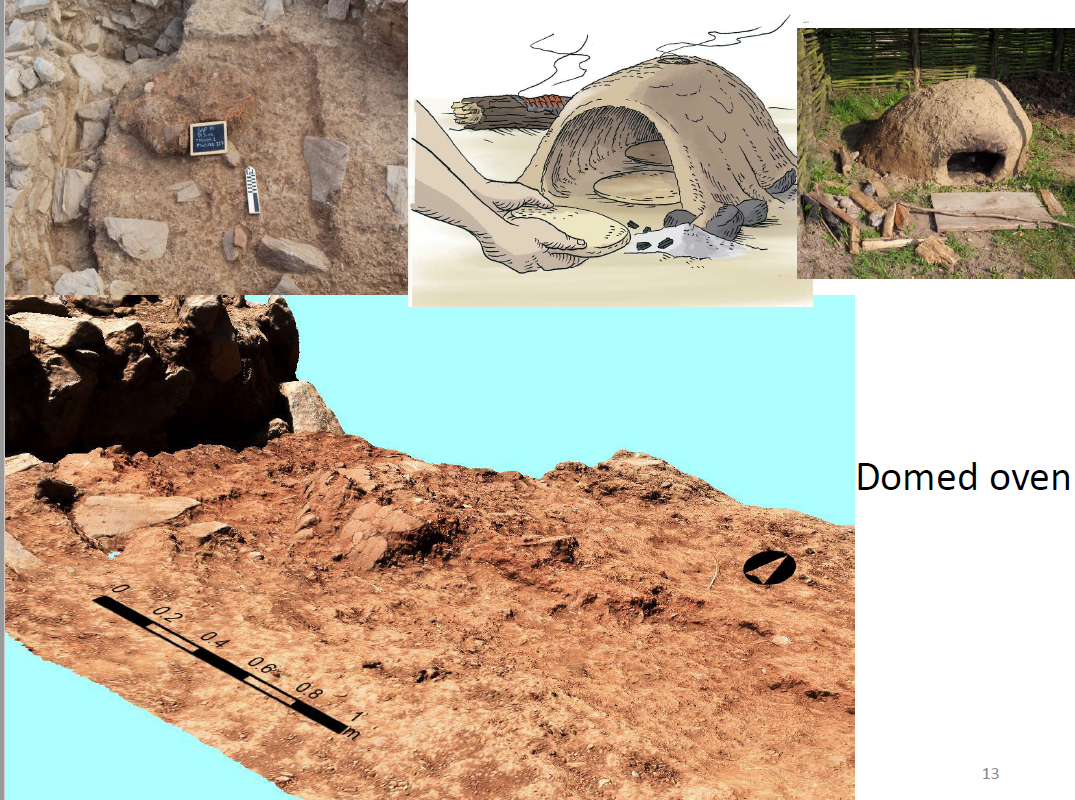We often think of life 6,000 years ago as short, nasty, and brutish. The site of Gourimadi reveals how innovative people were at the end of the Stone Age
This archaeology thread (with GREAT photos & video) shows how archaeologists uncover the prehistoric past
cc: @NorwInst
/1
This archaeology thread (with GREAT photos & video) shows how archaeologists uncover the prehistoric past
cc: @NorwInst
/1
Gourimadi is located on the island of Evia (Euboea) in Greece, right next to a huge rock outcrop of schist
It’s on a low ridge separating the Karystou plain to the south and Katsaronio plain to the north. The inhabitants had easy access to the plains all the way to the sea
/2
It’s on a low ridge separating the Karystou plain to the south and Katsaronio plain to the north. The inhabitants had easy access to the plains all the way to the sea
/2
Everything about the site shows how cleverly located it is
The name Gourimadi means “big rock” in the Arvanitika (Albanian) dialect. I love this toponym
The rock was valuable to those living there 6000 years ago. The foundations of their walls were made from the local schist
/3
The name Gourimadi means “big rock” in the Arvanitika (Albanian) dialect. I love this toponym
The rock was valuable to those living there 6000 years ago. The foundations of their walls were made from the local schist
/3
While the big rock marks the spot, simply finding the site wasn’t so easy
@ztankosic, co-director of the project, started surveying here in 2004. A field survey is a big job. Archaeologists line up to cover all the ground and record pottery, stone tools, architecture & more
/4
@ztankosic, co-director of the project, started surveying here in 2004. A field survey is a big job. Archaeologists line up to cover all the ground and record pottery, stone tools, architecture & more
/4
You have to keep your eye on the ground while avoiding brambles, heat-stroke & snarling dogs
These surveys reveal a lot about the use of the landscape in different periods. The “sites” they find can range from small scatters of artifacts to clear architectural structures
/5
These surveys reveal a lot about the use of the landscape in different periods. The “sites” they find can range from small scatters of artifacts to clear architectural structures
/5
Fortunately, Gourimadi stood out immediately. Right on the surface, eroding out of the slope, were dozens of shiny, obsidian artifacts
A full range obsidian tools, including a large group of arrowheads, have been found there, and are being studied by Katerina Psoma
/6
A full range obsidian tools, including a large group of arrowheads, have been found there, and are being studied by Katerina Psoma
/6
Obsidian is a volcanic glass & there are no sources on Evia. This volcanic rock was transported from the island of Milos around 250 kilometers away
It’s worth it though b/c obsidian’s conchoidal fracturing makes it one of the best stones for making sharp, flaked stone tools
/7
It’s worth it though b/c obsidian’s conchoidal fracturing makes it one of the best stones for making sharp, flaked stone tools
/7
The first farmers arrived in the area we call Greece around 9,000 years ago, bringing with them domesticated plants & animals as well as ceramic production technology
They quickly recognized the value of Melian obsidian and began exporting it all over the Aegean
/8
They quickly recognized the value of Melian obsidian and began exporting it all over the Aegean
/8
The Gourimadi artifacts help us understand the mechanics of this trade 6000 yrs ago
Cores reveal that production occurred on-site. Some flakes have cortex, the rough outer surface of obsidian rocks
Clearly, large rocks/chunks were imported & transformed into tools locally
/9
Cores reveal that production occurred on-site. Some flakes have cortex, the rough outer surface of obsidian rocks
Clearly, large rocks/chunks were imported & transformed into tools locally
/9
The obsidian knappers at Gourimadi were experts, even by Stone Age standards
In order to conserve obsidian, they used a pressure-flaking technique to make ultra-thin, almost translucent blades. These were sharp
You could say, “They’re all edge”
/10
In order to conserve obsidian, they used a pressure-flaking technique to make ultra-thin, almost translucent blades. These were sharp
You could say, “They’re all edge”
/10
These types of blades are found all over the Aegean, b/c this technique is great for conserving raw material
But Gourimadi is unusual for its large number of arrowheads: over 180 so far! These also highlight the expertise of the local obsidian knappers
/11
But Gourimadi is unusual for its large number of arrowheads: over 180 so far! These also highlight the expertise of the local obsidian knappers
/11
These arrowheads were made using a percussion flaking technique. This technique knocks off a thicker flake that can be retouched into tools such as arrowheads
But what does this uniquely diverse assemblage mean?
/12
But what does this uniquely diverse assemblage mean?
/12
For starters it shows the people living at Gourimadi had good access to Melian obsidian
This inland site was well-connected to the Aegean world. It was part of the changes occurring as the Stone Age ended, ushering in the “International Spirit” of the Early Bronze Age Aegean
/13
This inland site was well-connected to the Aegean world. It was part of the changes occurring as the Stone Age ended, ushering in the “International Spirit” of the Early Bronze Age Aegean
/13
Another idea is that the large number of arrowheads might show that this site was used as a base for hunting
As the project zooarchaeologist, one of my main jobs is to see how the animal bones might answer this question
/14
As the project zooarchaeologist, one of my main jobs is to see how the animal bones might answer this question
/14
There aren’t many bones. The soil in the upper layers has damaged/destroyed them
But I haven’t found any wild animals yet, just sheep, goat, pig, and cow
The people living there were primarily farmers and herders. They probably did hunt, but it would have been supplemental
/15
But I haven’t found any wild animals yet, just sheep, goat, pig, and cow
The people living there were primarily farmers and herders. They probably did hunt, but it would have been supplemental
/15
Gourimadi is located between the fertile Karystou and Katsaronio plains, ideal for producing crops and animals
Its prominent location on the ridge provides ready access to these plains. The viewshed extends beyond to Attica to the west and the Cycladic islands to the south
/16
Its prominent location on the ridge provides ready access to these plains. The viewshed extends beyond to Attica to the west and the Cycladic islands to the south
/16
While additional analysis is needed, the mineral inclusions in the pottery seem to indicate local production of this as well
The decorations on the pottery, despite being handmade, show it is part of a larger cultural tradition seen in nearby pottery styles
/17
The decorations on the pottery, despite being handmade, show it is part of a larger cultural tradition seen in nearby pottery styles
/17
The finds from the site also include an excellently preserved bronze axe or chisel (it’s not published, so I cannot share the pic. Instead I’ll show the excavation!)
The fact that slag, a metallurgical byproduct, was also found on-site shows metalworking occurred locally
/18
The fact that slag, a metallurgical byproduct, was also found on-site shows metalworking occurred locally
/18
There are some local copper sources, but no evidence yet that shows they were known so early in prehistory.
It’s possible that it came from known prehistoric sources as far away as Cyprus. Future analysis on the metallurgical finds will hopefully answer these questions
/19
It’s possible that it came from known prehistoric sources as far away as Cyprus. Future analysis on the metallurgical finds will hopefully answer these questions
/19
It’s amazing to think of the ingenuity of the people that lived at Gourimadi
The scatter of finds recovered from the survey was around four hectares (0.04km2/10 acres), but the settlement was probably smaller, given that downhill erosion likely spread these out
/20
The scatter of finds recovered from the survey was around four hectares (0.04km2/10 acres), but the settlement was probably smaller, given that downhill erosion likely spread these out
/20
They did everything for themselves. Quarry stone, build houses, farm crops, herd animals, knap obsidian tools, fire pots, and smith bronze tools
Maybe some was done by itinerant craftspeople, but that only emphasizes their connections to the larger world around
/21
Maybe some was done by itinerant craftspeople, but that only emphasizes their connections to the larger world around
/21
The architecture shows the site was used for several phases
The walls intersect in a complex 3D puzzle. A base for a wooden column next to a wall probably shows an effort to maintain or buttress the wall
Storage pits & an oven give a sense to the rhythms of daily life
/22
The walls intersect in a complex 3D puzzle. A base for a wooden column next to a wall probably shows an effort to maintain or buttress the wall
Storage pits & an oven give a sense to the rhythms of daily life
/22
Excavating the site isn't easy
An international team of experts & students battle the intense wind. It makes it difficult to sieve dirt, fly drones, or clean for photos
My wife Joni & good friend @schwa_umlaut are trench supervisors. Everyday, they return covered in dust!
/23
An international team of experts & students battle the intense wind. It makes it difficult to sieve dirt, fly drones, or clean for photos
My wife Joni & good friend @schwa_umlaut are trench supervisors. Everyday, they return covered in dust!
/23
They prevail led by @ztankosic ( @NorwInst), Fanis Mavridis (Hellenic Ministry of Culture and Sport) & Paschalis Zafeiridis
Experts help them, including @DenitsaNenova, @IoannaMoutafi, & Katerina Psoma. Their new touch-screen database even helps stop papers from flying away!
/24
Experts help them, including @DenitsaNenova, @IoannaMoutafi, & Katerina Psoma. Their new touch-screen database even helps stop papers from flying away!
/24
For more updates, follow @ztankosic and @NorwInst here or the Gourimadi Archaeological Project on FB: https://www.facebook.com/GourimadiArchaeologicalProject/
By using 21st century archaeological methods at Gourimadi, we get a better understanding of life at the end of the Stone Age in the Aegean
/end
By using 21st century archaeological methods at Gourimadi, we get a better understanding of life at the end of the Stone Age in the Aegean
/end
I apologize. I had some technical issues uploading a few videos, so some alterations I made were lost
In tweet #15, there is a clear picture of a red deer antler. I found it after writing the first draft of this thread
In tweet #15, there is a clear picture of a red deer antler. I found it after writing the first draft of this thread
Oh, and if you like to read awesome archaeology threads (who doesn't?), then you should DEFINITELY check out this thread of threads here 

 https://twitter.com/FlintDibble/status/1115585805597270017?s=19
https://twitter.com/FlintDibble/status/1115585805597270017?s=19


 https://twitter.com/FlintDibble/status/1115585805597270017?s=19
https://twitter.com/FlintDibble/status/1115585805597270017?s=19

 Read on Twitter
Read on Twitter
